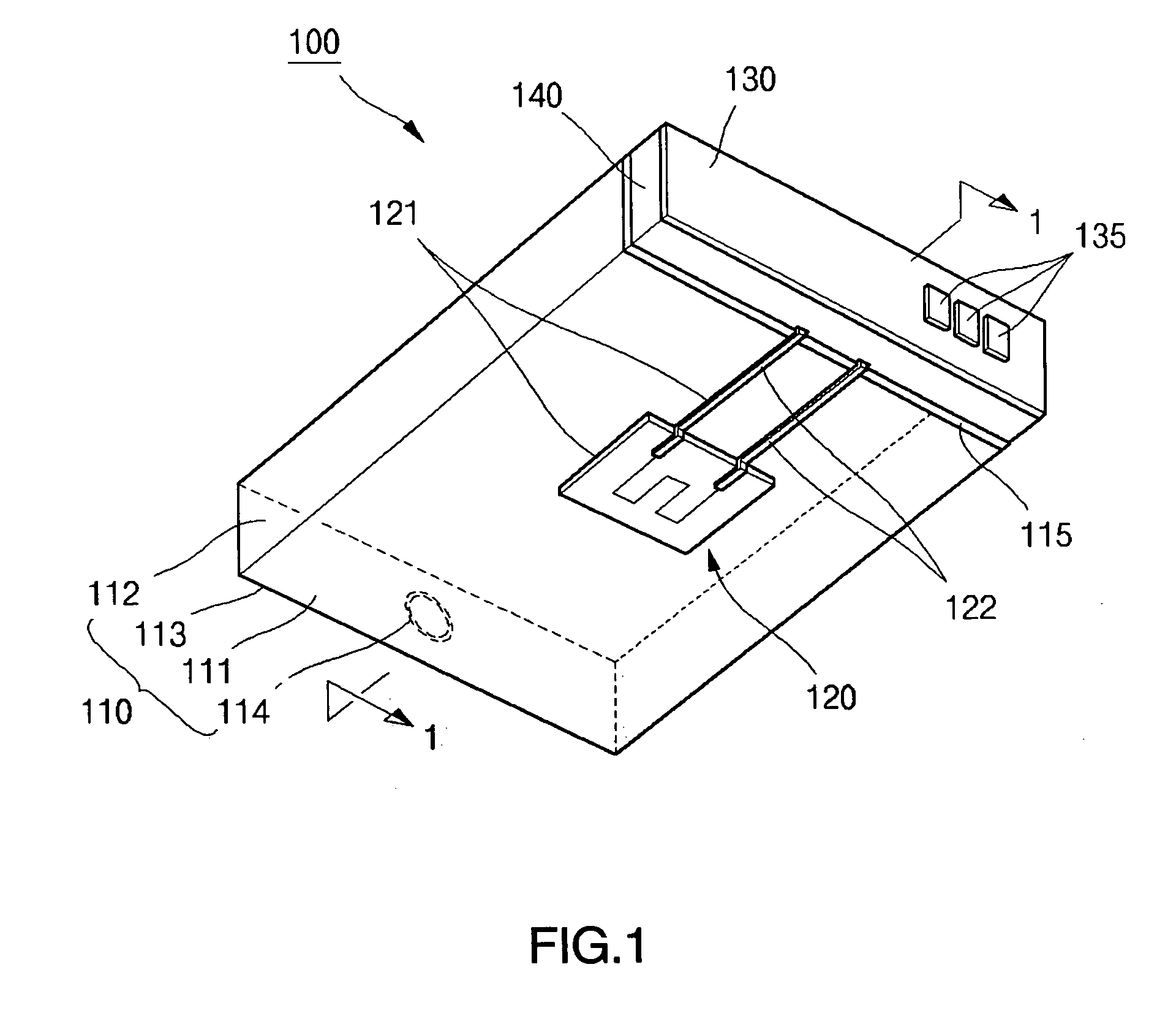Secondary battery
- Summary
- Abstract
- Description
- Claims
- Application Information
AI Technical Summary
Benefits of technology
Problems solved by technology
Method used
Image
Examples
Embodiment Construction
[0064] Hereinafter, exemplary embodiments of the present invention are described with reference to the accompanying drawings. In the following description and drawings, the same reference numerals are used to designate the same or similar components, and repetition of the description of the same or similar components has been omitted.
[0065]FIG. 1 is a perspective view of a secondary battery according to an embodiment of the present invention and FIG. 2A is a sectional view taken along line 1-1 of FIG. 1 and FIG. 2B is an expanded view of a portion of FIG. 2A.
[0066]FIG. 3A is an exploded perspective view of the secondary battery of FIG. 1 and FIG. 3B is a perspective view of a protective circuit module from behind.
[0067] As shown in FIGS. 1-3B, a secondary battery 100 according to an embodiment of the present invention includes a case 110 having positive and negative-electrodes, a safety device 120 attached to a surface of the case 110 and having a resistance value which changes (...
PUM
 Login to View More
Login to View More Abstract
Description
Claims
Application Information
 Login to View More
Login to View More - R&D
- Intellectual Property
- Life Sciences
- Materials
- Tech Scout
- Unparalleled Data Quality
- Higher Quality Content
- 60% Fewer Hallucinations
Browse by: Latest US Patents, China's latest patents, Technical Efficacy Thesaurus, Application Domain, Technology Topic, Popular Technical Reports.
© 2025 PatSnap. All rights reserved.Legal|Privacy policy|Modern Slavery Act Transparency Statement|Sitemap|About US| Contact US: help@patsnap.com



